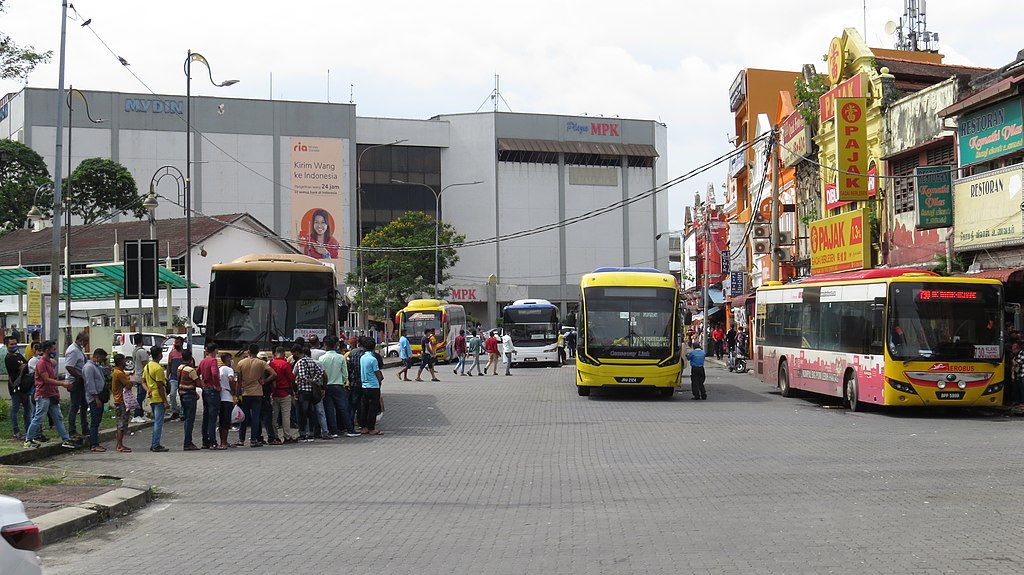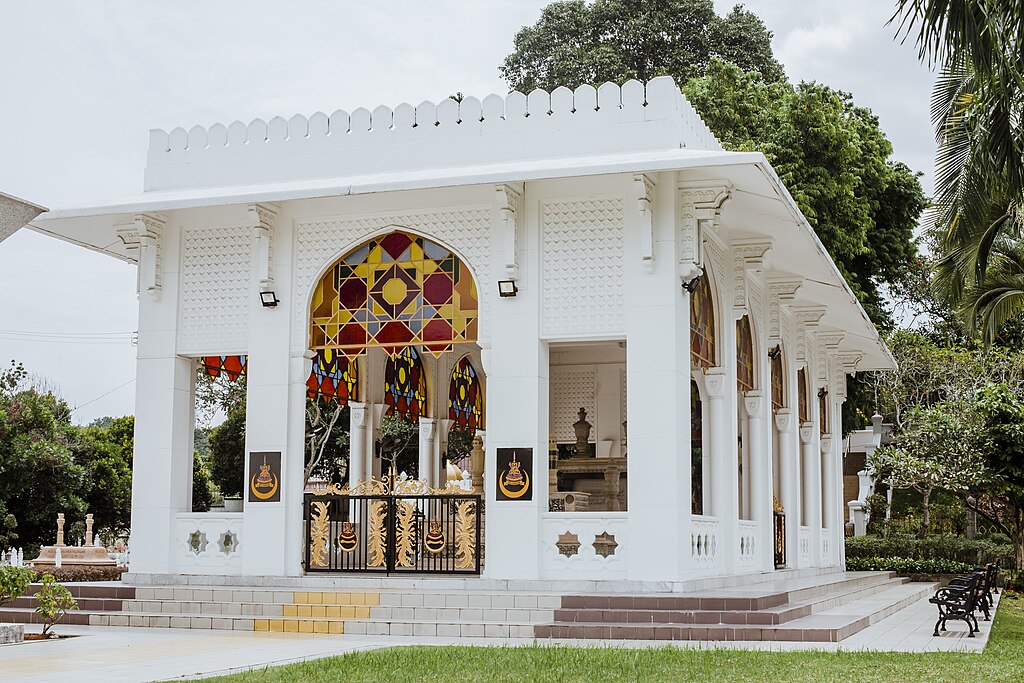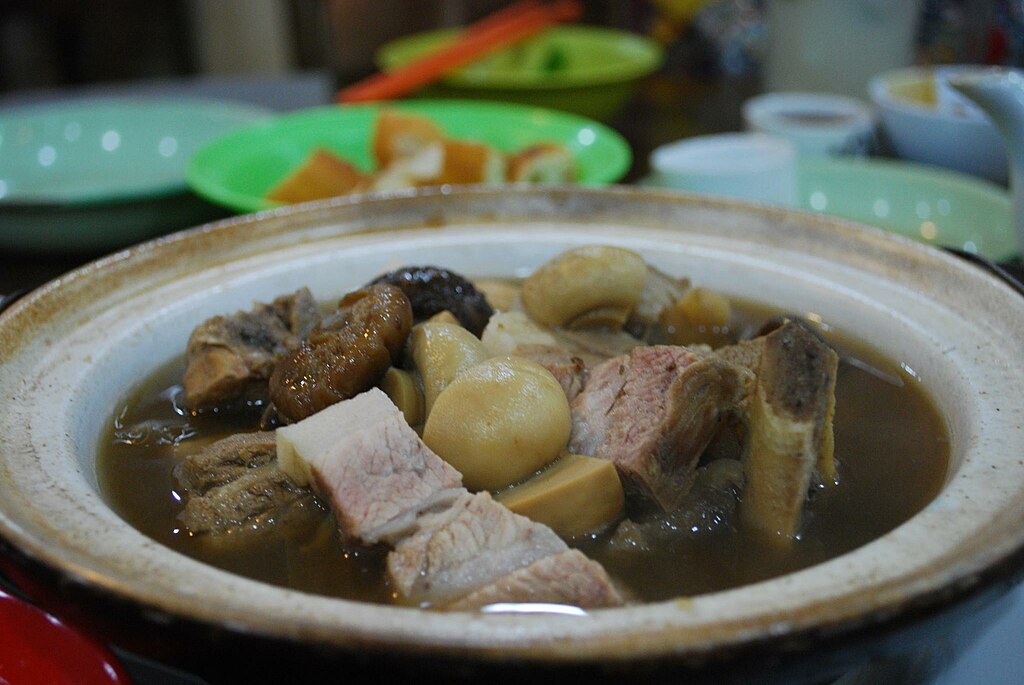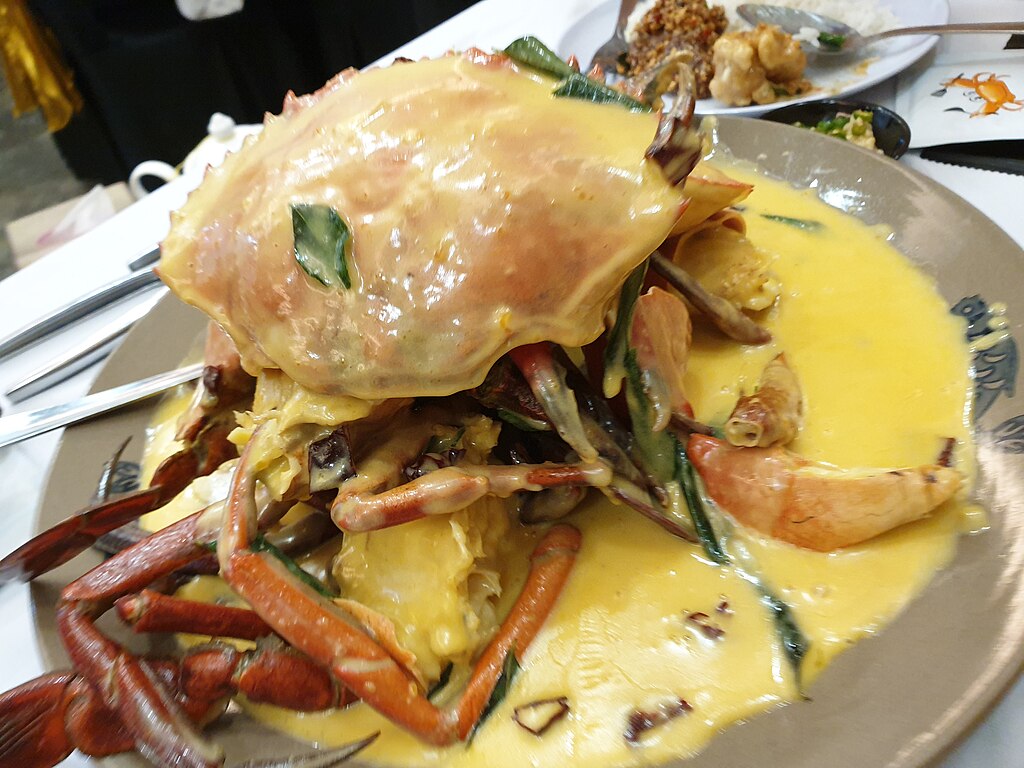Klang Travel Guide: 20 Things to See & Do in Klang, Selangor
Klang, the royal town of Selangor, is often overshadowed by its flashier neighbors like Kuala Lumpur and Shah Alam. For me, Klang holds a special kind of curiosity — it’s my hometown, the place where I was born.
But I didn’t actually grow up here, and I realized I knew very little about it. So, over the years, I’ve made a conscious effort to walk its streets, try its famous food, and learn its history. This guide will take you through the best of Klang, from heritage landmarks to must-try dishes, so you can appreciate it the way I’ve learned to.
Table of Contents
ToggleKlang at a glance
Geography
Klang sits about 30 km west of Kuala Lumpur, close to Port Klang (Malaysia’s busiest port), and is part of the greater Klang Valley metropolitan area. The town itself is divided into Klang North and Klang South, linked by the iconic Jambatan Kota bridge.
History
Klang is one of the oldest towns in Malaysia, with a history that stretches back hundreds of years. It was the royal capital of Selangor and an important trading hub thanks to its location along the Klang River, which connects inland settlements to the coast.
In the 19th century, Klang played a big role in the tin mining boom and was at the heart of political and economic developments in the state.
Population
Today, Klang has a population of over 297,000 people, with a mix of Malay, Chinese, and Indian communities. This blend is reflected in the town’s food, culture, and festivals.
Best time to go to Klang
Klang is a year-round destination thanks to its tropical climate. Temperatures typically stay between 27°C and 33°C throughout the year, so you can expect it to be warm and humid no matter when you come.
It tends to get more rain around October to December, with short but heavy downpours especially in the afternoons. These rain spells don’t usually last all day, but if you’re planning a lot of outdoor activities, it’s something to keep in mind.
Klang is never packed with tourists the way Penang, Langkawi, or Malacca can be, so you don’t really have to worry about crowds. However, it can get quite busy during major festivals like Deepavali, especially around Little India. Some shops and restaurants may close for a few days.
How to get to Klang
By KTM Komuter
The KTM Komuter train is one of the easiest and most affordable ways to get to Klang. From KL Sentral, take the Port Klang Line heading towards Port Klang, and Klang will be about an hour’s ride away. Trains run every hour or so (check schedule here).
The station you’ll arrive at, Klang Station, is located in the heart of the old town, making it easy to start exploring right away. If you’re visiting Little India or some of the historical landmarks, you can walk there in minutes.
By bus
From Kuala Lumpur, you can catch the Wawasan Sutera or Causeway Link buses from Chinatown (next to Travelodge Hotel). There are also bus operators that connect Klang to other Malaysian cities, with buses stopping at Klang Sentral Bus Terminal in the north.
Buses can take longer due to traffic, especially during rush hour, but they’re a budget-friendly option and usually more frequent than KTM Komuter.
By car
Driving is often the fastest and most flexible way to reach Klang, especially if you want to explore the surrounding areas or hop between the old town and newer developments. From Kuala Lumpur, take the Federal Highway or the NKVE (New Klang Valley Expressway), both of which lead straight into Klang.
Travel time is around 40–60 minutes depending on traffic, though during weekends or festive seasons it can be longer. Parking can be a bit tricky in the old town area, so be prepared to use public parking lots or walk from slightly further away.
The upcoming LRT3
Transport to Klang will get even easier once the LRT 3 (Light Rail Transit Line 3) is completed. Slated to connect Bandar Utama to Johan Setia in Klang, the line will have multiple stops in Klang itself, making it more convenient for both locals and visitors. This will be especially useful for avoiding road traffic and connecting directly from the city to different parts of Klang.
How to get around in Klang
Getting around Klang can be a bit of an adventure. Public transport isn’t as comprehensive as in Kuala Lumpur, so you’ll need to rely on Grab, taxis, or buses. Most buses serving Klang’s local neighborhoods depart from the Klang Bus Terminal near Plaza MPK.
If you’re planning to visit several attractions in one day, renting a car or hiring a driver can save you time, especially since some places are quite spread out. Walking is possible in certain areas like Little India or around the Royal Klang Town Heritage Walk, but the tropical heat and limited pedestrian infrastructure mean it’s not always the most comfortable option.
A nice development to look forward to is the Klang Hop-On Hop-Off Bus, which is expected to start operating soon. It will connect major attractions, making sightseeing much easier for visitors. Until then, a mix of Grab rides and short walks is probably your best bet for exploring the town.
Things to see & do in Klang
1. Sultan Abdul Aziz Royal Gallery
If you’re interested in history, this is one of the best places to start. The gallery is housed in a beautiful colonial building and showcases the history of the Selangor Sultanate, with personal artefacts, photographs, and ceremonial regalia. It’s not a huge museum, so you can explore it in about an hour.
There are guided city walks that start from here on Saturdays (advance booking required).
2. The old chartered bank building
This white colonial relic at the corner of Jalan Istana and Jalan Dato Hamzah is the old Chartered Bank branch, dating back to around the late 1800s. It claims the title of Klang’s first-ever financial institution, featuring Neoclassical and Dutch gable styles. Today, instead of bankers, the building hosts a silk boutique — perfect for your saree shopping spree.
3. Little India
Klang’s Little India is colorful, busy, and full of life, especially close to Hindu festivals like Deepavali (Diwali), Thaipusam, and Pongal. You’ll find sari shops, gold jewelers, and spice stores, as well as restaurants serving banana leaf rice, Indian rotis, and sweets like laddu and jalebi. It’s also one of the best spots in Klang for people-watching and photography.
The roads can be a little hectic here, with cars and motorbikes parked haphazardly on the road sides, where they’re not supposed to. If you drive, it’s best not to take the risk, or you might get your vehicle towed or clamped. Instead, find designated parking spaces a little further than the main street (Jalan Tengku Kelana), like near the train station area.
4. Masjid India Muslim Klang
Located in Little India, this mosque is more than 100 years old and although it has been rebuilt and renovated since, you can still see a distinctive design that blends Mughal and local influences. It’s especially striking during prayer times when the area around it comes alive with worshippers.
The mosque serves the Indian Muslim community in the area and has sermons in Tamil language as well as Malay.
5. Church of Our Lady of Lourdes
This Catholic church, built in 1928, is a reminder of Klang’s diverse religious heritage. The Gothic-style building, reminiscent of the Notre-Dame in Paris, features pointed arches and stained glass windows. It’s one of the most well-preserved colonial-era churches in Malaysia and still holds regular services.
6. Klang Convent School
Established around 1924 by the Holy Infant Jesus Convent as a branch of Bukit Nanas, it started in a tiny shophouse with only 19 students before moving into its current notable building between 1926 and 1928.
That building, with its symmetrical two-story entrance block, pointed-arch verandahs, and decorative plasterwork, still stands proud beside the Church of Our Lady of Lourdes. It’s the school I was supposed to attend had I not had to move across the country at the age of 7, so I can’t help but look at it with bittersweet curiosity.
7. Klang primary school
For a different slice of school history, there’s SK Klang — located along Jalan Dato’ Hamzah — one of the town’s national primary schools. You’ll likely pass by its modest gates if you’re wandering the area.
It’s a working school with morning and afternoon sessions, but what makes it unique is the old building that has been preserved since 1939, complete with its louvered wooden shutters.
8. Klang street art
Like many other towns in Malaysia, Klang has its own burgeoning street art scene, with new murals popping up on various buildings. Little India is one of the best places to find them. It’s like going on a little treasure hunt looking for these murals that are sometimes hidden away in corners and alleys you’d never expect.
One of my favorite surprises in Klang is the Laman Seni Safari Jejak Warisan — a backlane between Jalan Tengku Diaudin and Jalan Dato Hamzah now decked out with safari-themed street art.
Dinosaurs, elephants, chimps — many of the murals use 3D trickery like anamorphosis, popping off the walls unexpectedly.
9. Sri Nagara Thandayupathani Temple
This Tamil Hindu temple is dedicated to Lord Murugan in a calm yet vibrant corner of Little India, Klang. It quietly welcomes visitors with its bright Dravidian architecture, colorful statues, and sense of devotion that fills the air, especially during Thaipusam when the place buzzes with pilgrims and rituals. Inside, you’ll catch the smell of incense, the hum of chants, and surroundings rich with craftsmanship.
10. Masjid Bandar Diraja Klang
Masjid Bandar Diraja Klang (Klang Royal City Mosque) sits prominently by the Klang River, its golden domes making it one of the most recognizable landmarks in the area. Built to serve as the main mosque of the royal town, it often hosts large Friday congregations and important religious events.
The mosque combines traditional Malay architectural style with modern elements, and its riverside setting allows you catch a cool breeze as you walk along the grounds.
11. Jambatan Kota (Kota Bridge)
Jambatan Kota, or Kota Bridge, was Malaysia’s first double-decked bridge, the lower deck for pedestrians, cyclists, and motorbikes, and the upper deck for bigger vehicles. The bridge was built by Dorman Long, the same firm behind the Sydney Harbor Bridge, and cost about £820,000 in 1950s terms.
Strolling across it makes for a neat mix of nostalgia and reality — you’re literally crossing an icon of mid-century engineering.
12. Istana Alam Shah (Alam Shah Palace)
This is the official palace of the Sultan of Selangor. While the palace itself isn’t open to the public, you can admire its colonial-era architecture from the outside and get a sense of its historical importance.
It was constructed in 1950 to replace an older palace built on the same site and is still used for official ceremonies and royal functions. The palace grounds are beautifully kept, and it’s worth stopping for a few photos.
13. Sultan Sulaiman Mosque
Built in 1932 during the British colonial era, Sultan Sulaiman Mosque is one of the most beautiful mosques in Selangor. Its design features a mix of Islamic, Moorish, and colonial influences, making it look different from most other mosques in Malaysia. The interior is decorated with stained glass windows, carved wooden panels, and intricate tilework.
14. Royal Mausoleum
Set in a quiet compound near the Sultan Sulaiman Mosque, the Royal Mausoleum is the resting place of past Selangor Sultans and royal family members. The shaded grounds often feel hushed — an intimate spot to reflect on Klang’s royal legacy and how it shaped the region.
15. Raja Mahadi Fort
Built in 1866 by Raja Mahadi Ibni Almarhum Raja Sulaiman, the fort once stood as a strategic stronghold during the Klang War — a power struggle over control of Klang between two kings. The fort’s location on top of a hill overlooking the river allowed defenders to monitor river traffic and fend off attacks, making it a key site in the conflict.
The fort saw two major battles before falling to Tengku Kudin in 1868 after a prolonged siege. Today, only parts of the original structure remain, including its historic gateway and traces of the old earthen ramparts.
16. Sri Sundararaja Perumal Temple
Believed to be around 120 years old, Sri Sundararaja Perumal Temple holds a special place in Klang’s cultural landscape as the largest Vaishnavite temple in Malaysia for devotees of Lord Vishnu. It’s fondly nicknamed the “Thirupathi of South East Asia” after the famous temple in India.
17. Chinese Muslim Jamek Mosque
Masjid Jamek Cina Muslim in Bandar Botanik is the only mosque in Selangor designed with Chinese architectural influences. It covers an area of nearly three acres and accommodates up to 1,000 worshippers.
The design blends traditional mosque elements with Chinese motifs. Today, it hosts events like halal Chinese Muslim catering, weddings, Qurban, and charity outreach, reinforcing its role as both a spiritual center and community hub.
18. Fire station
Built in the 1890s, this is among the rare Victorian-era fire stations in Malaysia that still operates today. Its compact structure retains its striking red-and-white sunburst design, which is a nod to the period’s imperial motto that “the sun never sets on the British Empire.”
19. Try bak kut teh
Klang is the birthplace of bak kut teh, a rich herbal pork soup that’s usually eaten for breakfast or brunch. The dish comes with tender pork ribs, mushrooms, tofu puffs, and a fragrant broth brewed with Chinese herbs. Even if you’ve had bak kut teh elsewhere in Malaysia, the Klang version is said to be the most authentic and the best, if I say so myself.
20. Eat seafood
Being close to the coast and home to a thriving fishing community, Klang is a great place for fresh seafood. From butter prawns to steamed fish, many restaurants here serve seafood that’s fresh and generously portioned. Local favorites include spots near Telok Gong and Tanjung Harapan, but you can also find some good restaurants near the river in the old town area.
Where to stay in Klang
While many visitors treat Klang as a day trip, you can easily stay overnight to explore at a slower pace. Here are some well-reviewed options:
Budget
- Talents Motor Park Hotel – Budget-friendly, clean, and functional for short stays.
- Bloommaze Boutique Hotel Klang — Clean, spacious rooms in a peaceful setting.
Mid-range
- Wyndham Acmar Klang – A modern, full-service hotel with comfortable rooms and a pool, located just outside the city center.
- Première Hotel – Business-style hotel with spacious rooms, a gym, and an outdoor pool.
- Amverton Cove Golf & Island Resort — Known for its wide range of indoor and outdoor activities, scenic views, and friendly staff.
- KSL Esplanade Hotel with Hot Springs — Family-friendly hotel with an onsen and a convenient mall location.
- The Canvas Hotel — A clean and modern hotel, connected by a skybridge to Aeon Mall Bukit Tinggi.
How long to stay in Klang
If you’re short on time, you can see most of Klang’s main attractions in a full day. A day trip is enough to cover the Royal Gallery, Little India, and a few temples or mosques, plus a satisfying food crawl.
However, if you want to explore at a slower pace and indulge in its food scene, two days would be ideal. This gives you time to visit the historic port area, enjoy more meals without rushing, and perhaps take a short detour to nearby towns like Port Klang or Banting.
Suggested itineraries for Klang
1-day itinerary: a taste of Klang
- Breakfast at Chong Kok Kopitiam. Start your day with a classic Malaysian breakfast of kaya toast, half-boiled eggs, and strong local coffee or tea in this old-school kopitiam that’s been running for decades.
- Visit the Sultan Abdul Aziz Royal Gallery. Learn about Selangor’s royal history in this well-maintained gallery housed in a heritage building.
- See the Chennai silk house in what was previously the Chartered Bank (Klang’s first bank).
Midday:
- Continue walking in Little India, browse sari shops, spice stores, and snack stalls. If you time it right, you might catch a temple procession or festival preparation.
- Visit the Indian Muslim Mosque, the fire station next to it, and the Sri Nagara Thandayuthapani Temple.
- Lunch at one of the banana-leaf rice restaurants in Little India.
Afternoon:
- Continue walking around the area, and see the Klang Convent School, Church of Our Lady of Lourdes, Istana Alam Shah, Sultan Sulaiman Royal Mosque, and Klang Primary School.
Evening:
Head towards the riverside area and enjoy fresh seafood at Restoran Boston Baru Klang or Restoran Cina Muslim TSY Anwar Tho bin Abdullah while watching the sunset over the Klang River.
2-day itinerary: slow and steady
Day 1: Follow the One-Day Itinerary above, but take it easy and allow for more coffee breaks or time to explore the backstreets of Klang town.
Day 2:
- Breakfast at a mamak stall. Have roti canai with dhal and teh tarik for a more casual, everyday Klang experience.
- Visit the Klang Royal Town Mosque and the nearby Pasar Jawa Klang.
- Drive to the Sri Sundararaja Perumal Temple and/or the Chinese Muslim Jamek Mosque.
- Lunch at Teluk Pulai Bak Kut Teh. (Alternative: Check out Restoran Kukus, Chola Kitchen Restaurant, or Choon Guan Hainan Coffee 1956 for a pork-free lunch)
- Afternoon at Tanjung Harapan – Relax at this coastal spot, popular for fishing and evening strolls.
- Sunset and dinner at the seafood restaurants here — less crowded than central Klang’s Tepi Sungai area.
Additional tips for visiting Klang
- Dress for the heat – Klang is warm and humid year-round, so light, breathable clothing is best. If you’re visiting religious sites like the mosque or Hindu temples, carry a shawl or wear clothing that covers shoulders and knees.
- Cash is still useful – Many places now accept e-wallets and cards, but small eateries, traditional markets, and older shops may still prefer cash. ATMs are easy to find in shopping areas.
- Best time to visit – Mornings are generally cooler and less crowded, if you’re planning to explore Little India or the wet markets.
- Parking can be tricky – If you’re driving, be aware that parking in busy areas like Little India can be scarce. Paid parking lots are available, but locals often opt to park a bit farther away and walk.
- Safety — Klang has a bit of a reputation as a “rough neighborhood”, but this mostly applies to the more remote industrial areas like Taman Sentosa and Port Klang, not the main town. Nevertheless, it’s wise to stick to well-populated areas, avoid walking on isolated streets alone at night, and keep an eye on your belongings.
- Don’t rush it – Many people treat Klang as a half-day trip, but if you take your time, you’ll find a lot of small details that make the town more memorable.
Final thoughts
Exploring Klang has been an eye-opener for me. Even though it’s the town where I was born, I didn’t grow up here, so when I did move back as an adult, I had to approach it almost like any other traveler — curious, with a camera in hand. And behind its rough facade, it surprised me with its historical charm and rich cultural mix.
If you’re planning a trip, I highly recommend giving Klang at least a day or two in your itinerary. It’s not a polished tourist hotspot, but you’ll get real flavors, genuine interactions, and a slice of history.
If you enjoyed this post, check out the rest of my blog for more destination guides, food recommendations, and insider tips to help you see Malaysia in a way that’s authentic, affordable, and unforgettable.







.jpg)






















